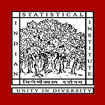Numerical Methods for PDE
Document Type
Book Chapter
Publication Title
Indian Statistical Institute Series
Abstract
The time evolution of prices of different financial quantities is often represented as a partial differential equation (PDE) with independent variables being time and prices of some other, often underlying, assets. Let V(St, t) be the price of an option at time t when the share price of the underlying stock is St. See Appendix A.1 for background on mathematical finance that is used in what follows. Under the Black–Scholes set-up, we have a risk-less asset bond Bt and a risky asset stock St. They evolve as where r is the interest rate, μ is the drift, σ is the volatility and W is a standard Brownian motion(BM). We apply Ito’s formula to the option price to get Consider the discounted option price Bt-1V(St,t). By the Fundamental Theorem of Arbitrage Pricing (see Appendix), the discounted option price must be a martingale under the risk-neutral measure. Also, under the risk-neutral measure μ= r. We have, from the above, For a martingale, the coefficient of the dt term has to be zero, otherwise there is a systematic drift.
First Page
53
Last Page
64
DOI
10.1007/978-981-19-2008-0_6
Publication Date
1-1-2023
Recommended Citation
Sen, Rituparna and Das, Sourish, "Numerical Methods for PDE" (2023). Book Chapters. 213.
https://digitalcommons.isical.ac.in/book-chapters/213

